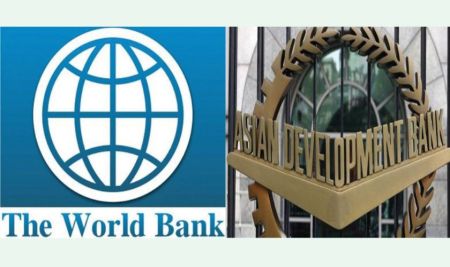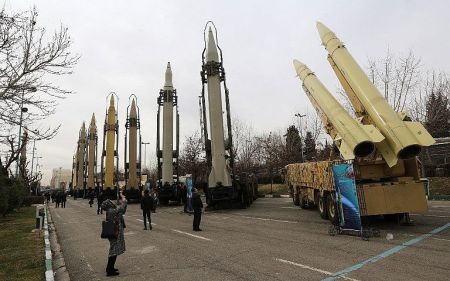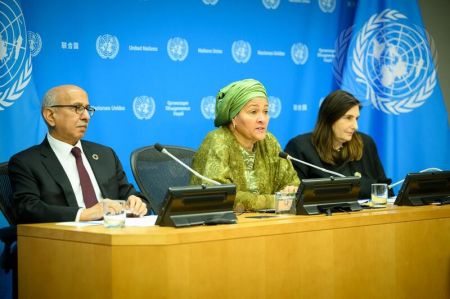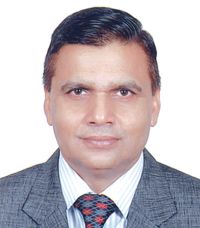 Gopal Kaphle
Gopal KaphleDeputy Governor, Nepal Rastra Bank
“Small banks can't withstand even small shocks”
Why did the central bank decide to raise the mandatory minimum paid-up capital for BFIs?
We took the step so that the capital base of banks widens and small shocks and risks do not affect them. We also want banks to be able to finance big projects on their own without having to seek co-financers; when the paid-up capital increases a bank’s single obligor limit (SOL) is also raised. This will enable banks to invest in big projects.
On the other hand, we found that in the SAARC region, Nepali banks have the lowest paid-up capital, even when they have the capacity to raise more capital. For example in India, the minimum paid-up capital required to open a branch is Rs 5 billion; but in Nepal you could open a bank with just Rs 2 billion. When a bank does not have capital, it cannot secure the trust of the people.
Wasn’t the policy introduced to forcefully merge BFIs that cannot increase their capital?
Forceful merger is not the main objective of the policy, but it definitely has helped mergers. If we had wanted forceful mergers, we could have told banks that they would not be allowed to inject new capital. But we haven’t said that. If a bank can find more investment, and comply with the new provisions on its own, we have no problems with that. Those who have the capacity to issue bonus or right shares or further public offerings, they can do so.
There are small BFIs who operate in one or two districts and they are prone to collapsing even when a single borrower defaults. When the borrower defaults, the loan has to be provisioned, and when the loan is provisioned, they fall short on this capital. When this happens, we need to declare the bank as a troubled bank and this triggers a bank run.
As I told you earlier, the main reason we came up with this policy was to make banks resistant to such small shocks.
There are reports that the policy was introduced to diversify the boards of BFIs, and to reduce the dominance of one or two particular groups in particular banks. Is that so?
That could be one of the implications of the policy. But even without the new policy, the central bank had been looking into the matter—take the case of NIC and BoA or NB and NCC.
There have also been reports that the new policy was brought in because of the central bank’s strategy to move towards universal banking.
I was part of a committee that came up with a five-year strategy for the banking sector. In our report, we have envisaged universal banking. Under such a system, banks have a big network. Today we have banks of several categories (A,B,C..), but the work they do is more or less the same. But when we implement universal banking, the categories will no longer exist. The banks will have their specialised area of operation; they will also work in areas other than their specialisation area, but their focus will be on their specialisation area.
When we implement universal banking, the banks may not be able to reach every nook and corner of the country, but they will cater to the needs of big industrial houses. We will have micro finance, regulated by a different entity, to work on financial inclusion.
There may be doubt that the banks’ recent work to promote financial inclusion may be undone by this, but the big banks can acquire these small banks that have a very strong local presence. This will save the big banks resources they would otherwise have to spend on setting up new branches.
We have seen that small banks are able to give more returns than big banks. So when big banks acquire small banks, the small bank’s returns will diminish.
The small banks are not going anywhere; they will be where they are. Big banks based in Kathmandu can acquire these small banks (say a bank in Surkhet). The big bank can make good use of their local expertise, and invest in agriculture—the big banks have not been able to invest in agriculture to the extent we want them to, but the development banks have been able to do that. One thing that will change is that the profit that used to be distributed among a small bank’s shareholders will have to go to the centre. But even then, the promoters won’t lose much as they will get shares of the big bank. To add to that, the small bank will be better prepared to handle shocks.
The monetary policy also talked about an infrastructure development bank. What is happening on that front?
As of today, we are not yet clear about it. My suggestion is to incorporate the concept in the new BAFIA (Banks and Financial Institutions Act), instead of preparing another legislation for it. If we incorporate it in BAFIA, NRB would get clear authority to monitor and supervise such banks.
If NIDC can raise its capital to the said Rs 20 billion, we could come up with a policy to establish an infrastructure bank as was declared in the monetary policy.
For an infrastructure bank, the capital of Rs 20 billion is not very big. The minimum capital we have set could be spent in one single project. If we get one infrastructure bank, we may get more, if the promoters can justify their business plan. We want such a bank to do more than just collect deposits
The bankers have said that the decision to increase the capital was unexpected, the time they have been given is too short, and the capital they have to raise is too big.
We introduced the policy after several rounds of deliberations and calculations. Banks that have their operation limited to just one district will have to increase their capital by as much as 25 times. Will they be able to do that? For them, the policy’s indirect message is to go for a merger, downgrade to micro finance or get acquired by a big bank.
When the banks become big, their operations will also have to expand. Do we have the human resources capable of handling such an expansion?
Let’s say after the mergers, the number of commercial banks goes down to 10-15. What will then happen is that the supply of skilled people will increase, and those people who go around changing banks every six months will not be able to continue doing that. They will have to compete. On the other hand, all CEOs will not be able to keep their jobs. It should not be about individuals; we do not make policies to suit individuals.
Is the central bank thinking of allowing new banks to open?
As the central bank has put a stay on opening new banks, many people might have thought that the central bank is negative towards new banks coming into the market. We are open to giving permits to new banks that have big capital and a specialised business plan—the infrastructure bank provision is one way for new banks to enter the market.
So the new permits will be limited only to these types of banks?
We might raise the required capital further for new commercial banks to come into the market. But looking at the size of the economy, the number of exiting banks looks quite enough. We do not want a lot of banks in the country. We want big banks that can withstand shocks.
How have the JV banks responded to the new policy?
The JVs were worried that if their capital base increases, they would have to increase their business to give returns to investors. I have told them not to worry. The reason I have said this is that for example, there are 30 banks right now, after sometime it might drop to 10. So the business that three banks were handling would now have to be handled by a single bank.
The other thing I have told them is that there is a lot of scope for new infrastructure in Nepal, and when their banks are big, they can finance big projects without looking for partner financers. They should get more investment from their JV partner so that they would be able to bring in new technology. If they do not do this, and raise capital domestically, they will turn into a local bank. That we don’t want.
None of the JVs are in a mood to wind up operations here. I don’t see any problems with the JVs.
The volume of Nepal’s trade with China has been increasing. Chinese tourist arrivals are on the rise and many Chinese contractors work in Nepal. In view of all these things, a Chinese bank is what we need. Has the central bank done anything in this regard?
We have raised the issue at the governor and deputy governor levels. We have urged the Chinese central bank to open a branch in Nepal so that it becomes easier to carry out transactions through the banking channel. The Chinese central bank has told us that it is positive about opening a branch in Nepal.
The presence of Indian JVs in Nepal has helped us a lot, but we don’t have Chinese banks in Nepal. I think the main reason for this is that the level of communication we have with India is higher compared to China. In addition to this, we have observed that the members of the financial sector in China are not aware of the conditions in Nepal—may be this is because we have not been able to approach them.
One reason the people mostly point out for Chinese banks not coming to Nepal is that Nepal’s economy is very small compared to China’s, and it would not make sense for them to have a presence in Nepal. The same can be said about India, but Indian JVs have a good presence in Nepal.
So, as the banks become big, will they be allowed to open branches outside Nepal?
If a bank decides to open a branch outside Nepal, we would be more than happy if they have the capacity to do so. There are no obstacles from our side. But we should also not forget that in India a bank needs Rs 5 billion paid up capital to open a single branch.
Many bankers have also raised the issue of liquidity in the market. What is the situation now?
For the last 4-5 months we have had a lot of liquidity in the banking sector. At one time we had Rs 100 billion in the system. Due to this, the rate fell. We wanted the rate to rise, but the government was not issuing bonds in time. So NRB decided to collect deposits from the banks. This was the first time we did it, not many central banks around the world do this. After that, the rates have improved.
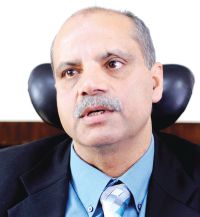 Upendra Poudyal
Upendra PoudyalPresident, Nepal Bankers’ Association
& CEO, NMB Bank Ltd
“Size of the bank doesn't matter, strength & quality does”
What is Nepal Bankers’ Association’s response to the new monetary policy?
Overall, the monetary policy has all the ingredients that a balanced monetary policy should have. It focuses on reconstruction and rehabilitation and improving access to finance. It has also taken steps towards improving financial stability.
What about the central bank’s decision to raise the minimum paid-up capital of BFIs?
Nepal Bankers’ Association has come up with a very professional response to this. We have said that the new policy came at a time when most BFIs in the country are doing better than before. This is the case even with some BFIs that were in trouble. They were running according to their capacity. After Basel III, it would have been better if the banks were allowed to raise capital gradually. We believe that the size of the bank does not matter; it is their strength and quality that matters. NRB could have given more priority to this.
I think NRB came up with the policy to make banks more resistant to shocks and to develop the capacity among local banks to compete with foreign banks. Because it has only given the banks two years to raise the minimum capital by up to four times, there is little possibility that fresh capital can be injected. If it had given five years, then that might have been possible. So, this shows that NRB wants banks to merge and the number of banks to come down.
The market has taken this announcement positively and most banks are looking at mergers.
What are the major challenges to merging?
Mergers are more likely to be successful when the merging entities do so by their own choice. But now everyone is panicking and forced mergers are likely to take place.
There are several issues that arise with forceful mergers. For example, in Nepal there are several political parties that have emerged from other older political parties and more parties have emerged out of those parties. This is a cultural issue. It would be difficult to manage this.
Another issue is that, today a bank in trouble with Rs 2 billion capital can be repaired, but when a bank becomes Rs 8 billion, the culture from three sets of banks can increase operational risk and cripple the banking system.
There are some banks that might say that they will increase their capital by injecting more money. If they go ahead with that, their business volume will have to increase three times.
What I am apprehensive about is that big banks will have problems giving returns on investment. Nowadays, banks are giving 20-30 percent in returns. Big banks will not be able to do that unless their business volume increases. This is unlikely looking at the economic condition of the country.
This might lead investors to put their money in unproductive sectors that do not contribute to growth. They might put their money in real estate or the securities market and bubbles might be created.
If we can pull this off, there would be nothing like it. But if it turns bad, then we will be in big trouble.
NRB’s new policy on paid-up capital is not just for big commercial banks, but also for smaller financial institutions. How will it affect the smaller BFIs?
The case with commercial banks is that they are backed by big institutional investors. They may not be concerned if the banks do not distribute dividends for a few years. But in the case of smaller BFIs (some of them have a paid up capital of as low as Rs 30 million) the investors will want dividend each year.
Commercial bankers may take up the challenge to increase their capital from Rs 2 billion to Rs 8 billion if they do not distribute dividends for a few years. But what will the smaller BFIs do? I believe NRB has a plan for this. It might address this specific problem individually.
What is NMB’s strategy to raise its capital?
We are entering into a merger with four other financial institutions: Bhrikuti, Pathibhara, Prudential and Clean Energy. After that our paid up capital will reach around Rs 4.8 billion. Then, Clean Energy’s JV partner will add 20 per cent to this, and we will reach around Rs 5.75 billion. When we reach this stage, we will have more options to raise further capital. Then we will issue bonus shares for 2-3 years, and acquire some smaller companies if the need arises.
Fortunately, we had started the merger process even before the new monetary policy was announced. In fact, we were working on a merger (as per our company’s policy of pursuing organic and inorganic growth) even before NRB introduced its merger policy. But due to various reasons, it had stalled. We knew that sooner or later we would have to raise Rs 5 billion and we were proactive in this.
What major challenge would the ‘new’ banks face?
I think the major challenge will be to make use of the 20 percent of deposits we need to put in liquid assets. Now we have two options for this: government securities and inter-bank lending. These two options are grossly inadequate. Commercial banks are bleeding when it comes to managing liquidity.
Where do you see the banking sector two years from now?
I cannot precisely say how many banks we will have, but the number of commercial banks will be half of what it is today. Some of the banks would have raised capital through mergers and some would have done it using their own resources. I think BFIs will go for mergers and acquisitions would be rare.
 Anil Gyawali
Anil GyawaliCEO, Global IME Bank
“The decision will help banks utilise local resources better”
What is your response to the new monetary policy?
By and large, the monetary policy is commendable. The central bank has been doing a good job in mopping up liquidity from the market. The excess liquidity in the market had made the rates fall, take for example the 15-year development bonds. The interest on it is just 2.44. This is not good for the market.
What strategy does Global IME have to comply with in light of the recent NRB directive on paid-up capital?
The merger that we entered into has significantly increased our capital so it won’t be difficult to make the jump. Our paid-up capital is already Rs 5.5 billion ; so we won’t have much difficulty in adding another Rs 2.5 billion. For this we can plough in our profit by issuing bonus shares, and if need be, we can issue right shares. The final decision has not been made, and will be decided by the Board in due course.
There is a section of market observers who say that the decision to increase the minimum paid-up capital was taken for the benefit of big banks like Global IME. What is your take on this?
I don’t think so. In our context the central bank decided to raise the minimum capital requirement as it was one of the lowest in the Sub-Continent. If we look at it from the point of view of the individual banks, the decision may not seem unfair—it was the central bank that allowed banks to open with a paid-up capital of Rs 2 billion. But in principle, looking at the overall economy, the decision will help banks utilise local resources better, and the quality and the capacity of the banks will improve; this is good for the country.
So do you think the new policy is aimed at forcing banks and financial institutions to merge?
Global IME has already experienced a merger. There are banks that have a paid-up capital of Rs 2 billion, for them it would be difficult to reach the minimum capital in the given time frame with the plough back of their profit. So the options they have right now are to either issue right shares or go for a further public offering. But it will be difficult if 15-16 banks simultaneously try to raise more capital from the market at the same time. That is why a merger/acquisition is an easier option, also if we look at the availability of funds, investment and the share price.
There are reports that the central bank may soon allow new banks to get licenses, and it may set an even higher capital requirement for the new banks.
I think, if you look at the overall economy, it would be better to reduce the number of banks, in view of the regulator’s capacity and the need to improve the quality of banks. If the number is limited, then there will be healthier competition among the banks.
Even if new banks are given permission to start, they would have to come as a specialized entity. Instead of opening new banks, why not buy existing ones? Also the central bank should emphasise the fact that just fulfilling the capital requirement will not be enough to secure a licence. They would have to pass the fit and proper test and other qualitative factors such as their business plan would also have to be considered.
One thing I would like to point out is that the liberal licensing policy NRB adopted had some positives too. For example, financial inclusion improved because banks opened new branches, improved, the awareness of the people on banking, and developed human resources necessary for the sector. But the question that needed an answer was that could we have continued on the same road? Was it sustainable? We have already reaped benefits from the licensing policy of the past, so now it would not be wrong to say that it is time to consolidate.
Now let’s get back to the challenges Global IME faced after the merger. How difficult is it to give returns to your investors when the bank’s capital increases?
Servicing of returns is a challenge as the market is almost saturated. Going to new virgin rural areas has the constraint of lack of infrastructure as well as small population to justify the returns. Therefore the most basic thing is that the state must build infrastructure. When it does that, economic activities automatically increase, and banks get more business. The banks can only go where there is basic infrastructure such as communications, transportation and power.
After the central bank came up with a policy to encourage mergers among banks, Global IME was one of the first to act. What were the cultural challenges the bank faced?
Mergers can only happen when the board members of the organisations concerned agree to it. If there is conflict in any part of the organisation, it will affect the whole organisation. So when the promoters resolve their differences then other things can be taken care of. Yes, in principle, there is a possibility of cultural differences.
In the case of Global IME, I think the managers who were here after the merger (I came in just two months ago) were able to deal with the situation and all the resources have been properly utilised.
Two years down the line, how do you see Nepal’s financial sector? If international banks do come to Nepal, what will happen to the banking sector?
I think international banks coming to Nepal would be good for the sector. Local banks will be able to learn from them, the quality of the entire market will improve. Similarly, when the banks are big, they can invest more in human resources; they can even get experts from outside the country. This will be positive for the sector. Banks would not be able to open new branches the way they are used to, and the cost of financial services may increase. But the quality of banks will definitely be better.
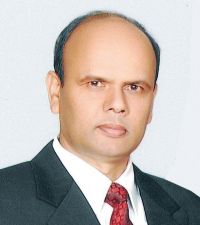 Krishna Raj Lamichhane
Krishna Raj LamichhanePresident Development Bankers Association Nepal and CEO, Kailash Development Bank
“New policy is aimed at forceful mergers”
The new monetary policy says banks will have to raise their paid-up capital by as much as four fold by 2017/18. What is Kailash Development Bank’s strategy for this?
As a national-level development bank, we need to increase our paid-up capital from the existing Rs 900 million to Rs 2.5 billion. In two years, we can issue bonus shares and raise up to Rs 1.7 billion. After that we will be around 750 million short; we can raise the amount through a merger or acquisition. If after that too we don’t meet the target, we will issue right shares.
The central bank has not made the details public, so the board has not met to decide on this. But personally, I am not in favour of injecting new capital. If we inject new capital, the bank will be over-capitalised, and money that should have been utilised somewhere else would sit idle in the bank.
Was the announcement expected?
The volume of capital involved and the time the governor has given was unexpected. Basel III talks about capital adequacy. So we were thinking that the monetary policy may say something about capital adequacy and even if it talked about raising paid-up capital, it would not be very significant and the central bank would give adequate time to implement any changes.
The policy is not aimed at creating big banks, its main objective is to decrease the number of banks. But I believe that a bank does not become a good bank just with big capital, we need to look at the capital adequacy of the bank.
The other point I want to raise is that we need banks of different sizes. For example, anyone who wants to open a shop does not always have to open a Bhatbhateni. Smaller banks and financial institutions, especially the auxiliary development banks, have done a lot in the field of financial inclusion. They went to places where big banks would not go. The smaller banks can give better interest rate on deposits and issue cheaper loans—the big banks can’t do this.
All the banks that have opened in Nepal started operations after getting approval from the central bank. Until the last two years, new development banks had been cropping up with a paid-up capital of Rs 200 million—there is one development bank that is not even two years old. How reasonable is it to ask them to raise their capital by as much as 25 times (in the case of auxiliary development banks)?
Even before the new monetary policy, BFIs had started entering into mergers. In the last two years, 80 financial institutions have merged. The central bank could have encouraged this. It will be difficult to enter into merger agreements in just two years. As they say, it is always better to think before you leap. If you rush into things, chances are that you will meet an accident.
Market watchers say that BFIs now have three options to raise their capital: enter into mergers, issue right/ bonus shares or go for a public offering. Is it so?
We should bear in mind that the main objective of the new policy is to decrease the number of BFIs, not to inject new capital in the market. BFIs have no other option but to go for a merger or issue bonus shares. If they fall short even after that, then the central bank may allow them to issue right shares. But two years is too short time for this. The central bank has only around 2-3 staff to look after mergers, it also needs to build its capacity to handle mergers.
What could be the challenges for banks that want to merge?
In the past, we have heard that merger agreements were cancelled because the boards of the merging banks could not reach a decision on who is to become the CEO and who is to be on the board. After the new policy, these issues have become irrelevant.
But there are other challenges as well to mergers. The parties to a merger would have different sets of work culture, employees and assets. As we have seen from banks that have merged in the past, getting a synergy effect is not easy; hundreds of employees leave, branches need to be closed, the entire stationery needs to be replaced and the new bank needs to spend millions on rebranding. Since the cost of a merger is this big, the government could at least give some tax incentives.
How do you see the banking sector after the NRB deadline elapses?
There will be around 17-18 commercial banks (now the number stands at 29), the number of development banks will go down to 30 (from the existing 79). NRB will have one desk to look after each bank. Every day, the desk will monitor the bank.
The big banks will become ‘too big to fail’. Nowadays, the failure of one bank does not have a bearing on the economy, but when a big bank fails, the government will have to bail it out using tax payers’ money. As a whole, it would take some time for the financial sector to come to terms with the new system.















